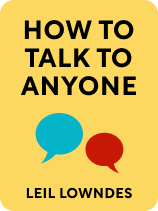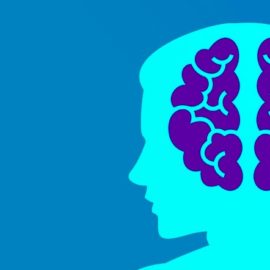

This article is an excerpt from the Shortform book guide to "How to Talk to Anyone" by Leil Lowndes. Shortform has the world's best summaries and analyses of books you should be reading.
Like this article? Sign up for a free trial here .
What role does body language play in communication? Is it true that over 90% of communication is nonverbal?
Body language massively influences people’s first impressions of you and influences how they react to you. However, those who quote the 90% figure are misinterpreting the mid-1960s research by Albert Mehrabian, who claimed that 93% of communication is nonverbal—including body language and tone of voice—and only 7% is verbal. Nevertheless, your body language transmits many signals about your personality, mood, and disposition.
Read about the importance of body language in communication, according to communications expert Leil Lowndes.
Your Body Language Communicates Everything About You
The importance of body language in communication cannot be underestimated. You form an instinctive impression of everyone you come across within the first few seconds of seeing them. Before someone gets a chance to utter her first words, you’ve already made assumptions about her personality, her feelings, her confidence levels, and her social or professional status. Most importantly, you’ve already decided whether she’s the type of person that you want to spend time with. Likewise, people make assumptions about whether they want to talk to you as soon as they set their eyes on you.
(Shortform note: Research expands upon what Lowndes says about instinctive impressions: Your first impressions of others are reasonably accurate indicators of whether or not you’ll get along with them. One study compared the first impressions of strangers meeting a person—who we’ll call Person A—to personality reports on Person A completed by their longtime friends. The first impressions were similar to the personality reports by longtime friends, showing that the strangers’ assumptions were accurate.)
What forms the basis of these assumptions? According to Lowndes, it’s your body language—this includes your posture, how comfortable you appear, the way you smile, and the way you make eye contact. Whether you’re conscious of it or not, your body language constantly emits signals about the way you feel.
11 Types of Body Language
Vanessa Van Edwards (Cues) explains that there are 11 different types of body language—each emitting signals about the way you feel.
Facial expressions: There are seven universal microexpressions that reveal your hidden emotions.
Body proxemics: Your general movements reveal a lot about your preferences and how nervous you feel.
Hand gestures: People read into the way you use your hands to express your emotions, tell stories, or comfort yourself.
Ornaments: Your clothes and accessories—and the way you interact with them—are extensions of your body language.
Interest: You express your interest in others by using subtle signals, such as flicking your hair, and obvious signals, such as winking or smiling.
Eye gaze: Your eye movements reveal your intentions and can indicate emotions such as attraction, skepticism, and stress.
Pacifying: These are self-soothing repetitive behaviors that serve to calm you down after experiencing something unpleasant—for example, arm rubbing or bouncing feet.
Haptics: The way you express yourself through touch reveals your preferences. For example, whether you chose to give someone a pat on the shoulder or a hug.
Blocking: These cues create barriers against others. For example, touching your mouth or folding your arms.
Paralanguage: The pitch and tone of your voice reveal how confident or anxious you are even when people aren’t paying attention to your words.
Emblems: There are over 800 cues that people use instead of words, such as a thumbs-up to express agreement. The cues you use depend on your culture and geographic location.

———End of Preview———
Like what you just read? Read the rest of the world's best book summary and analysis of Leil Lowndes's "How to Talk to Anyone" at Shortform .
Here's what you'll find in our full How to Talk to Anyone summary :
- Practical techniques to help you overcome social discomfort
- How to confidently develop new connections
- How to appear more likable without saying a word






